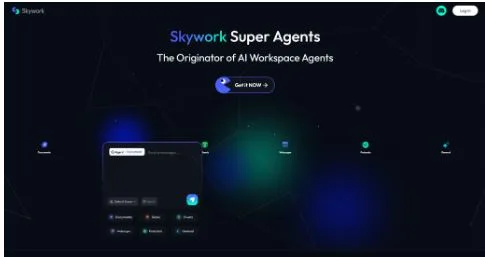A Guide To Asset Management For Non Profit Organisations
Defining Nonprofit Asset Management
Nonprofit asset management is basically the practice of keeping tabs on everything your organization owns. This isn’t just about the money in the bank; it includes physical items like buildings and equipment, as well as investments and endowments. It’s about making sure these resources are used wisely to further your mission. Think of it as a responsible way to handle all the stuff your nonprofit has.
Proper asset management helps keep your organization on solid ground. It’s a proactive approach to handling your organization’s holdings, ensuring they are stewarded responsibly. This means looking ahead, planning for the future, and making sure your assets are working as hard as they can for your cause. It’s a key part of good financial health.
Ultimately, the goal of nonprofit asset management is to protect and grow your organization’s resources. This allows you to focus more on your mission and less on worrying about where the next dollar is coming from or if that old copier is going to break down. It’s about smart stewardship.
Distinguishing Asset Management from Cash Management
It’s easy to mix up asset management and cash management, but they’re not quite the same thing. Cash management is all about the money flowing in and out of your organization – think bank accounts, payroll, and daily expenses. It’s the day-to-day financial juggling act.
Asset management, on the other hand, takes a broader view. It covers not just your cash but also your investments, property, equipment, and any other valuable items your nonprofit possesses. It’s about the long-term health and growth of all your holdings, not just the immediate cash flow. This distinction is important for clear financial planning.
While cash management keeps the lights on today, asset management builds the foundation for tomorrow. Both are vital, but they serve different purposes in keeping your nonprofit running smoothly and sustainably.
So, while cash management deals with the immediate liquidity needs, asset management looks at the bigger picture of what your organization owns and how those assets can be best utilized and preserved over time. It’s about managing the whole picture, not just one piece of it.
Identifying Your Organization’s Diverse Assets
Nonprofits often have a wider range of assets than people realize. Of course, there’s the cash in your bank accounts and any investments you might have. But don’t stop there. Think about your physical property – buildings, land, vehicles, and office equipment. These are all significant assets.
Beyond the tangible, consider intangible assets too. This could include things like intellectual property, software licenses, or even strong brand recognition. Grants received, even if restricted, represent a form of asset that needs careful tracking and management. Every item has a role.
Here’s a quick look at common nonprofit assets:
- Cash and Equivalents
- Investments (stocks, bonds, mutual funds)
- Endowments and Reserve Funds
- Real Estate and Property
- Vehicles and Equipment
- Technology (computers, software)
- Donated Goods and Supplies
- Intellectual Property
Getting a clear picture of all these diverse assets is the first step toward effective nonprofit asset management. It helps you understand what you have, where it is, and how it’s being used.
The Crucial Role of Asset Management for Nonprofits
Ensuring Accountability to Donors and Stakeholders
Nonprofits operate on trust. Donors and grantmakers give funds with the expectation that these resources will be used effectively to further the organization’s mission. Proper asset management provides a clear picture of where resources are allocated and how they are being used. This transparency builds confidence and strengthens relationships with those who support the cause. Demonstrating responsible stewardship of assets is not just good practice; it’s a fundamental requirement for maintaining donor loyalty and attracting new support. When an organization can clearly account for its physical and financial assets, it signals a commitment to integrity and operational soundness.
Boosting Operational Efficiency and Resource Optimization
Think about it: how much time and money is lost when equipment is misplaced, or when duplicate purchases are made because existing inventory isn’t tracked? Effective asset management streamlines operations by providing a clear overview of all organizational resources. This allows for better planning, reduces waste, and ensures that assets are utilized to their fullest potential. By knowing what you have and where it is, your team can work more effectively, freeing up resources that can be redirected towards program delivery and mission advancement. This focus on efficiency is key for any nonprofit aiming to maximize its impact.
Navigating Compliance and Reporting Requirements
Many nonprofits face specific regulatory and reporting obligations. Whether it’s for grant applications, audits, or tax filings, accurate records of assets are indispensable. A well-maintained asset registry simplifies these processes, reducing the burden on staff and minimizing the risk of errors or non-compliance. This structured approach to tracking assets helps organizations meet external requirements with greater ease and confidence. It also provides internal stakeholders, like board members, with the information they need to fulfill their oversight responsibilities.
Extending Asset Longevity Through Proactive Care
Physical assets, from vehicles to office equipment, represent significant investments for nonprofits. Proactive maintenance and timely care are vital to extending their useful life and avoiding costly premature replacements. Asset management systems can help schedule routine maintenance, track repair history, and monitor the condition of equipment. This foresight not only saves money in the long run but also ensures that essential tools remain available and functional for ongoing operations. Investing in a good asset management system is an investment in the sustained operational capacity of your nonprofit.
Strategic Approaches to Managing Nonprofit Assets
Comprehensive Asset Identification and Classification
Getting a handle on what your nonprofit actually owns is the first real step. This means listing out everything, from the big stuff like buildings and vehicles to the smaller items like computers and office supplies. You need to know what you have before you can manage it. Think of it like taking inventory before a big sale – you wouldn’t want to miss anything.
Once you have that list, you need to sort it. Grouping similar items makes tracking much easier. You can categorize by type (equipment, property, software) or by department. This organized approach to asset identification helps prevent things from getting lost or forgotten. It’s about creating a clear picture of your organization’s holdings.
A well-organized asset registry is the bedrock of good stewardship. This detailed breakdown allows for better planning, budgeting, and accountability. Without this foundational step, any subsequent management efforts will likely fall short. It’s the difference between knowing where your resources are and just guessing.
Leveraging Custom Fields for Detailed Tracking
Standard asset tracking is good, but sometimes you need more specific information. That’s where custom fields come in. For a nonprofit, this could mean tracking grant restrictions tied to a specific piece of equipment or noting the warranty expiration date for a vehicle. These details matter for compliance and operational planning.
Think about a specialized piece of medical equipment purchased with a donor’s restricted funds. A custom field could flag this restriction, ensuring it’s only used for its intended purpose. Or, for software licenses, a custom field can track renewal dates, preventing lapses in service. This level of detail in asset management is key.
Using custom fields allows your nonprofit to tailor its asset management system to its unique needs. It moves beyond generic tracking to provide actionable insights. This makes your asset management strategy much more effective and responsive to the organization’s mission.
Implementing Robust Asset Management Policies
Policies are the rulebook for how your nonprofit handles its assets. They should cover everything from how assets are acquired and used to how they are maintained and eventually disposed of. Clear policies provide guidance for staff and protect the organization from potential issues.
These policies aren’t just for show; they are practical tools. They help ensure consistency across the organization and provide a framework for decision-making. For example, a policy on equipment use can prevent misuse and extend the life of valuable items. This proactive approach is vital for responsible stewardship.
A well-defined policy framework reduces ambiguity and promotes accountability in asset management.
Having these guidelines in place is critical for maintaining order and maximizing the value of your nonprofit’s assets. It’s about setting clear expectations and procedures for everyone involved.
The Importance of a Professional Investment Policy Statement
For any nonprofit that holds investments or significant reserves, an Investment Policy Statement (IPS) is non-negotiable. This document outlines the goals, strategies, and guidelines for managing those financial assets. It acts as a roadmap for investment decisions and helps align them with the organization’s mission.
An IPS provides clarity on risk tolerance, investment objectives, and performance benchmarks. It also details the roles and responsibilities of those overseeing the investments. This structured approach helps prevent impulsive decisions and ensures that investment activities are conducted prudently.
A professionally drafted IPS is a cornerstone of sound financial governance for nonprofits. It demonstrates a commitment to responsible financial management and provides transparency to stakeholders. This statement is a key part of your overall asset management strategy, especially for financial holdings.
Maximizing Your xAssets for Mission Impact
Mitigating Risks Through Responsible Asset Stewardship
Nonprofits operate with a deep responsibility to their mission and their supporters. This means every asset, from a donated vehicle to a grant-funded piece of equipment, must be handled with care. Responsible stewardship isn’t just about preventing loss; it’s about safeguarding the trust placed in your organization. Proactive management of your xAssets helps shield your organization from unforeseen issues.
Think about it: a poorly maintained vehicle could lead to an accident, or a lost laptop could expose sensitive donor data. These aren’t just operational hiccups; they can become significant financial and reputational liabilities. By implementing clear policies for asset use, maintenance, and security, nonprofits can significantly reduce these risks. This careful approach ensures that resources remain available to serve the mission, rather than being diverted to fix preventable problems.
This careful handling of xAssets builds a foundation of reliability. It shows donors and stakeholders that their contributions are protected and used wisely. It’s about demonstrating a commitment to the long-term health and stability of the organization, which in turn, supports sustained mission delivery.
Enhancing Transparency with Stakeholders
Openness about how an organization uses its resources is key to building and maintaining trust. When it comes to assets, transparency means having clear records of what you own, where it is, and how it’s being used. This clarity is vital for donors, grantmakers, and the community you serve.
Having a well-documented asset registry allows for easy reporting. You can confidently show stakeholders that equipment purchased with grant funds is being used for its intended purpose, or that donated items are actively contributing to your programs. This level of detail moves beyond simple financial statements to provide a tangible picture of your operations.
Ultimately, this commitment to transparency strengthens relationships. It reassures supporters that their investment in your mission is being managed responsibly, encouraging continued engagement and support. It’s a direct link between good asset management and a strong, trusting community around your nonprofit.
Achieving Long-Term Financial Sustainability
Financial sustainability for a nonprofit isn’t just about bringing in donations; it’s about making the most of what you have. Strategic asset management plays a direct role in this. By understanding the full lifecycle of your assets, you can plan for the future more effectively.
This includes anticipating replacement costs for equipment, budgeting for necessary maintenance, and even considering the total cost of ownership before accepting new assets. For instance, a donated piece of equipment might seem like a windfall, but if it requires expensive upkeep or specialized training, it could strain your budget. Smart asset tracking helps identify these potential long-term costs upfront.
By actively managing and optimizing your xAssets, you prevent unnecessary expenses and can even generate income through efficient use or planned disposal. This foresight ensures that your organization isn’t just surviving, but thriving, with resources consistently available to advance its mission year after year.
Utilizing Assets to Drive Mission Forward
Assets are more than just physical items or financial holdings; they are tools that directly enable a nonprofit to achieve its mission. Effective management ensures these tools are always ready and optimally used.
Consider a community outreach program. The vehicles used for transport, the technology for communication, and the supplies for workshops are all assets. If these are well-maintained, readily available, and assigned efficiently, the program can reach more people and deliver services more effectively. Poor asset management, conversely, can lead to delays, reduced service capacity, and missed opportunities.
By aligning your asset management strategy with your programmatic goals, you ensure that every resource is working as hard as possible for your cause. This means regularly assessing if your current xAssets are the best fit for your needs and making adjustments as required. It’s about making sure your resources are not just accounted for, but are actively contributing to your impact.
Practical Asset Management for Nonprofit Operations
Smart Record-Keeping for All Assets
Keeping track of everything your nonprofit owns is more than just a good idea; it’s a necessity for responsible operation. This means more than just a shoebox full of receipts. Think about a detailed inventory, a living document that lists every item, from the computers in the office to the specialized equipment used for your programs. This level of detail helps prevent loss and ensures you know exactly what resources are available.
Accurate record-keeping is the bedrock of effective asset management. It allows for better budgeting, easier audits, and a clearer picture of your organization’s true worth. Without it, you’re essentially flying blind, making it hard to plan for the future or even account for the present. This practice is key to understanding your assets.
Here’s a simple way to start: create a master list. This list should include:
- Asset Name (e.g., “Dell Laptop”, “Projector”)
- Serial Number
- Purchase Date
- Original Cost
- Current Location
- Assigned User (if applicable)
Budget-Conscious Maintenance Strategies
Maintenance doesn’t have to break the bank. For nonprofits, finding cost-effective ways to keep assets in good working order is vital. This often means shifting from a reactive approach (fixing things when they break) to a proactive one (preventing breakdowns). Regular, simple checks can catch small issues before they become expensive repairs. Think about scheduling routine tune-ups for vehicles or software updates for computers.
This proactive care extends the life of your assets, saving money in the long run. It also minimizes downtime, which can be disruptive to your mission delivery. Consider creating a simple maintenance schedule that aligns with your budget and the needs of each asset.
Consider these budget-friendly maintenance tips:
- DIY Checks: Train staff on basic maintenance tasks for common equipment.
- Preventive Schedules: Implement regular, scheduled inspections and cleaning.
- Bulk Purchasing: Buy maintenance supplies in larger quantities for potential discounts.
- Negotiate Service Contracts: Seek out nonprofit discounts or bundled service agreements.
Simplifying Compliance and Grant Tracking
Nonprofits often face strict rules about how funds and assets are used, especially when grants are involved. Proper asset management makes meeting these requirements much simpler. When you have clear records of your assets, you can easily demonstrate to grantors that their funds were used as intended. This transparency builds trust and can lead to future funding opportunities.
Tracking grant-specific assets is also easier with a good system. You can tag assets that were purchased with grant money, making it straightforward to report on their status and location. This avoids confusion and ensures you’re always in compliance with grant stipulations.
Detailed asset records are your best defense against compliance issues. They provide a clear audit trail and support your organization’s accountability to funders and stakeholders.
Strategic Planning for Future Asset Needs
Looking ahead is just as important as managing what you have now. Effective asset management involves anticipating future needs. What equipment will you need in five years? Will your current vehicles be sufficient for your growing programs? Thinking about these questions allows you to plan and budget accordingly, avoiding last-minute scrambles or costly emergency purchases.
This strategic planning also includes considering the lifecycle of your assets. When is it time to replace an aging piece of equipment? How will you fund that replacement? By incorporating these considerations into your long-term financial plans, you ensure your organization remains well-equipped to carry out its mission effectively.
Key areas for future planning include:
- Replacement Cycles: Estimate when major assets will need replacement.
- Technology Upgrades: Plan for necessary upgrades to stay current.
- Capacity Building: Identify assets needed to support program expansion.
- Funding Strategies: Develop plans to save or secure funds for future acquisitions.
Addressing Common Asset Management Challenges
Nonprofits often face hurdles when it comes to managing their assets effectively. Limited resources, complex grant rules, and the inevitable aging of equipment are just a few of the common issues that can arise. However, with smart strategies, these challenges can be overcome, allowing organizations to better steward their resources and focus on their mission.
Overcoming Limited Resources Through Collaboration
Many nonprofits operate with lean budgets, making dedicated asset management staff or expensive software seem out of reach. This is where collaboration becomes a powerful tool. Partnering with other organizations can mean sharing expensive equipment, pooling resources for bulk purchases, or even jointly developing training programs for staff on asset care. Think about sharing a specialized piece of equipment that only gets used a few times a year, or working with a local business for discounted maintenance services. These kinds of partnerships can significantly reduce the burden on individual organizations.
Managing Grant Restrictions Effectively
Grant funding often comes with specific rules about how the money can be used and what happens to the assets purchased with it. Keeping track of these restrictions can be complicated, especially when multiple grants are involved. The key is clear, consistent record-keeping. Develop a system that clearly flags assets purchased with restricted funds, detailing the grant source and any specific usage or reporting requirements. Regular internal audits and open communication with grant managers can help prevent missteps and ensure compliance. This careful tracking of assets is vital for maintaining donor trust and securing future funding.
Planning for Aging Assets and Replacements
Buildings, vehicles, and equipment don’t last forever. As assets age, they require more maintenance and eventually need to be replaced. Ignoring this reality can lead to unexpected breakdowns and significant budget strains. A proactive approach involves creating a realistic asset replacement schedule. This means forecasting when key assets will likely need replacing and starting to set aside funds well in advance. Consider the total cost of ownership, including maintenance and potential repair costs, when making purchasing decisions. Building a dedicated replacement fund, even a small one, can make a big difference when the time comes.
Leveraging Technology for Efficient Asset Tracking
While resources may be limited, technology offers accessible solutions for better asset management. Even simple, low-cost software can automate many tasks, from tracking asset locations and maintenance schedules to generating reports. Cloud-based systems allow for easy access to information from anywhere, and many offer features like custom fields to track specific details relevant to your organization. Implementing even a basic asset tracking system can dramatically improve accuracy and efficiency, freeing up valuable staff time to focus on the mission rather than administrative burdens. This smart use of technology is key to overcoming many common asset management challenges.
Putting It All Together
So, we’ve gone over why keeping track of your nonprofit’s stuff matters and how to actually do it. It’s not just about ticking boxes; it’s about making sure your organization can keep doing the good work it’s meant to do. By getting a handle on your assets, whether it’s a building, a vehicle, or even a laptop, you’re making sure those resources are used well. This means less waste, more accountability to the people who support you, and ultimately, a stronger ability to achieve your mission. It might seem like a lot at first, but taking these steps can really make a difference in how smoothly your organization runs and how much impact it can have.







